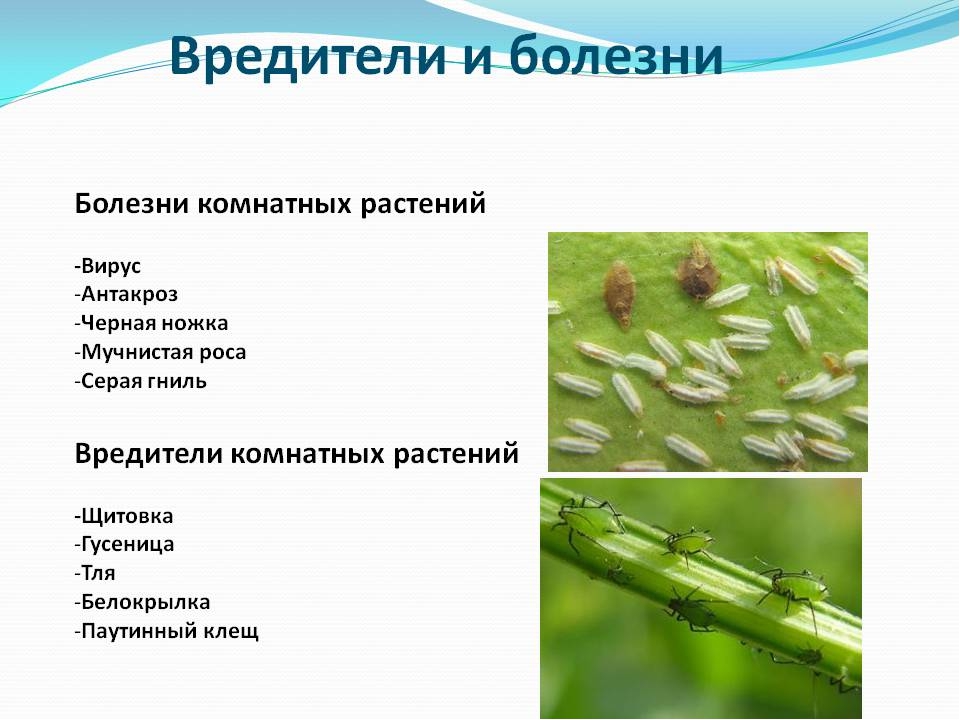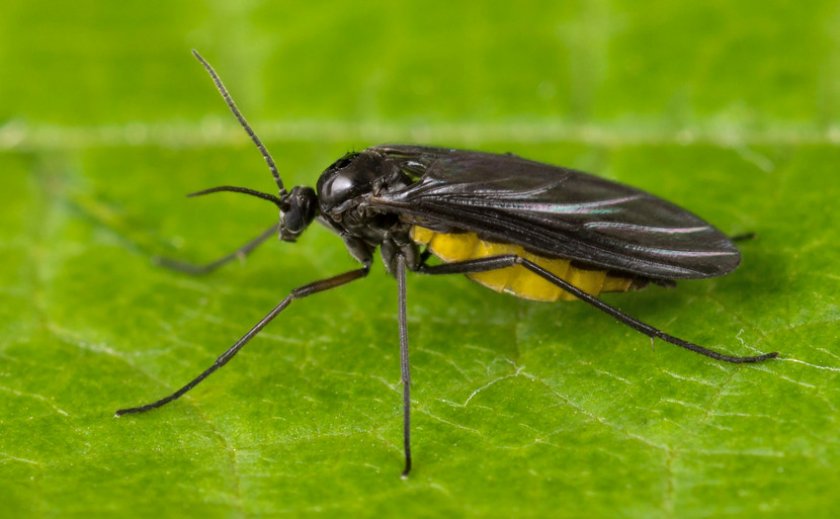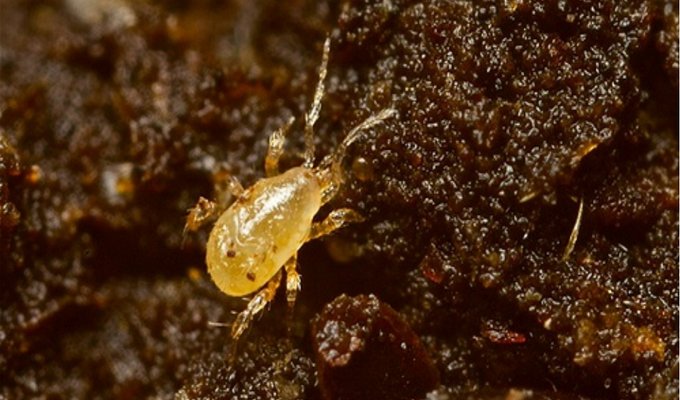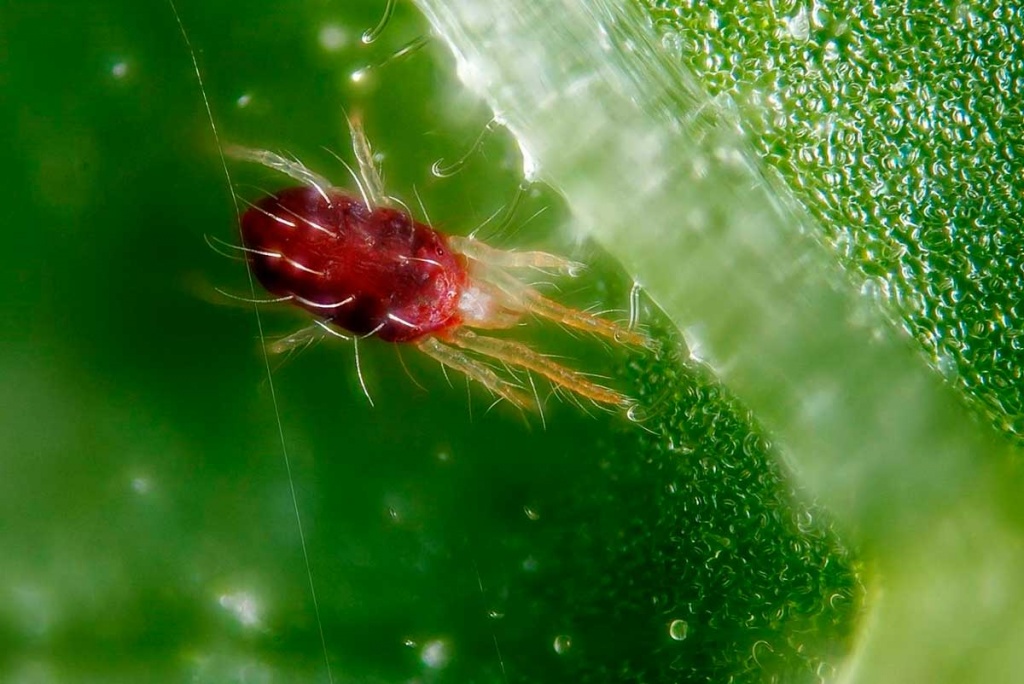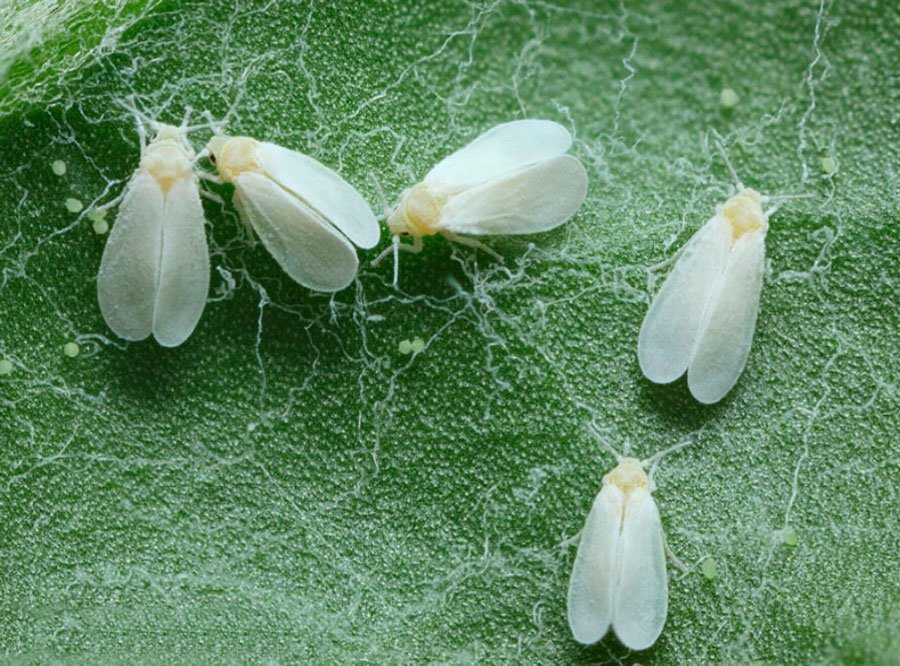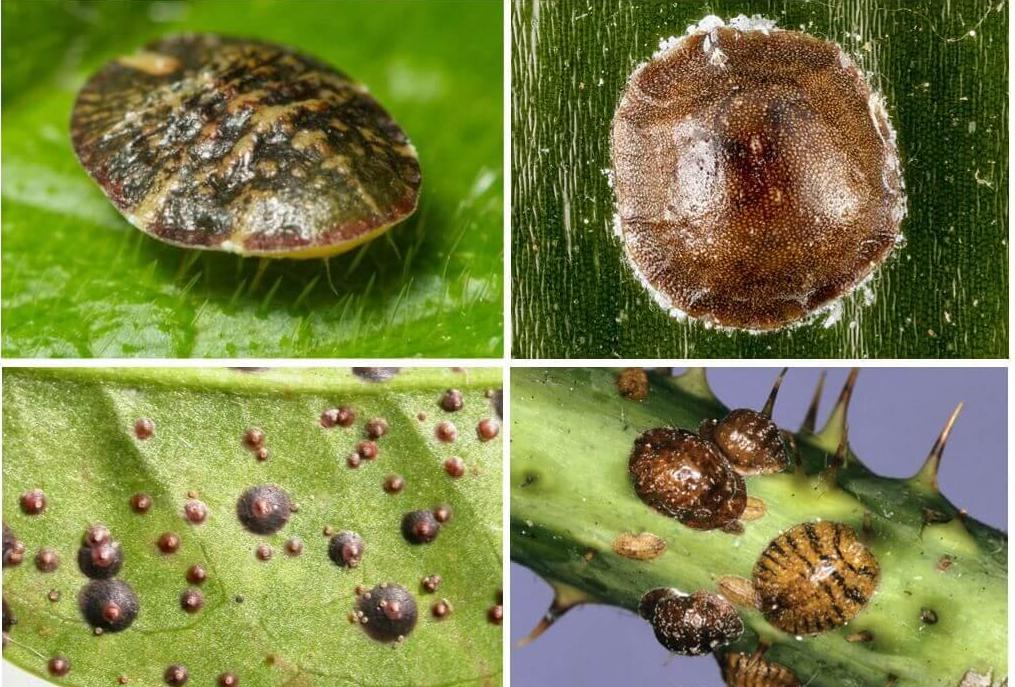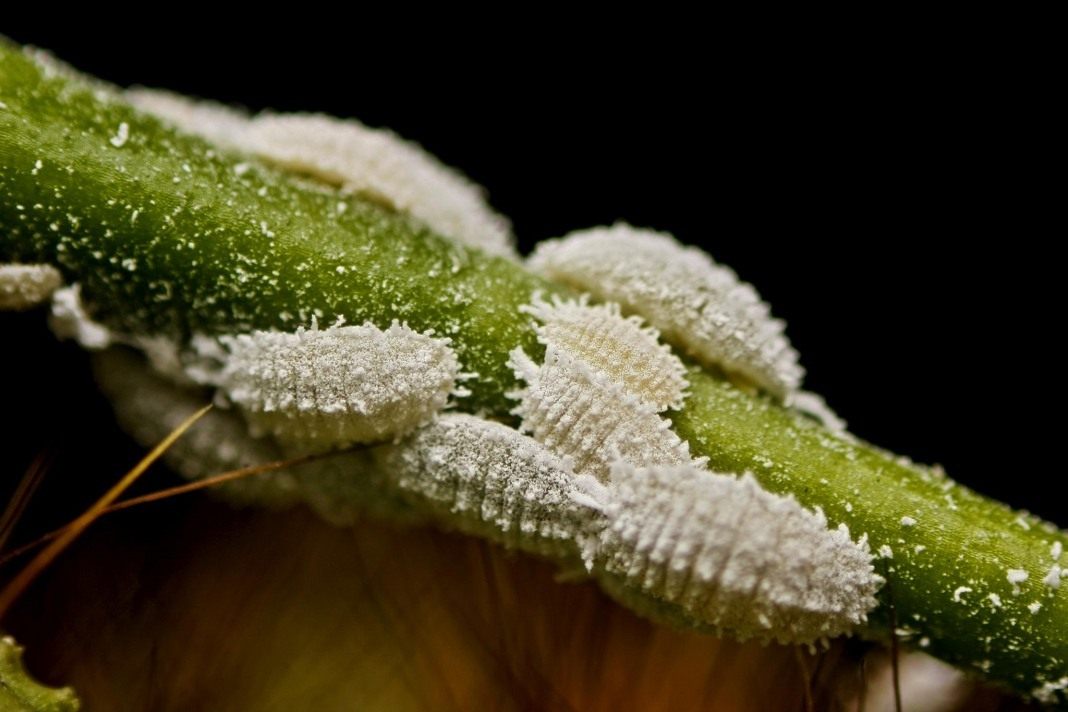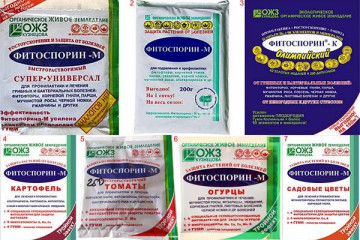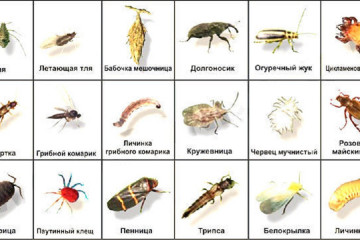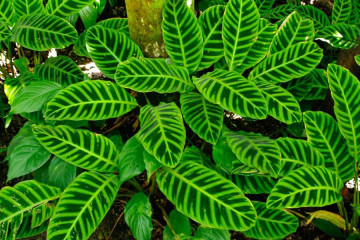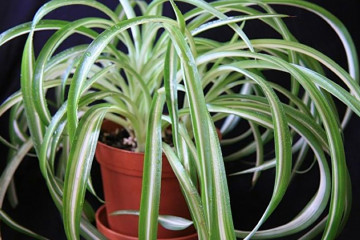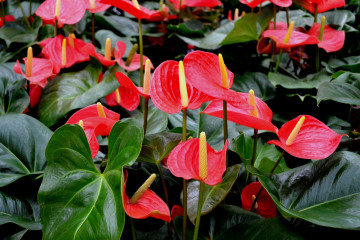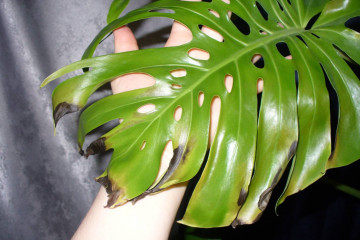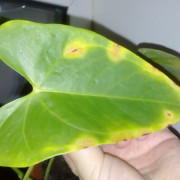Houseplant pests and houseplant diseases
Improper care leads to the fact that pests of indoor plants appear on the flowers. They are capable of causing the death of a culture, and the appearance of the first symptoms of defeat requires urgent rescue measures. In addition, often harmful insects weaken the flower, and then diseases easily penetrate into it.
Houseplant pests
The list of pests of indoor flowers is varied. Every culture has its own enemies.
White bugs in the ground of houseplants
Small white bugs that appear in indoor flowers in the ground are a fool. The jumping springtail has an elongated body covered with sparse hairs. Lives in a substrate with humus, feeds on plant residues. It affects the root system, causing the death of the flower.
If signs of an insect are found, you must:
- reduce the frequency of watering;
- create drainage - against mold and acidification of the soil mixture;
- add sand to the composition.
Black bugs on indoor plants
Dark midges on plants are mushroom gnats or sciarids. The insects grow up to 7 mm, have an elongated body and black wings (females do not have them). Larvae feeding on the roots of the culture are especially dangerous.
Processing is carried out with a pinkish solution of potassium permanganate, scattered over the surface with chopped dill.
Aphids are the enemy of soft tissue plants
It is easy to see: a greenish insect up to 2 mm long, with or without wings.
The sweetish liquid released from the body of the pest leads to sticking of the foliage and the arrival of ants. Aphid larvae live both on the green part of the plant and in the substrate.
The affected flower is given a shower, geranium is placed next to it - it scares off the parasite. In case of severe infection, it is better to use Aktar or Confidor.
Onion mite
Prefers to eat onion crops, infected root crops turn into dust. You can determine the attack by the gradually withering plant. The root mite starts up in containers without drainage, with abundant watering and constant heat.
A sick flower must be removed from the rest, inspect the roots and rinse them with running water. Then place in an insecticidal solution (Neoron or Apollo) for 12 hours, disinfect the pot.
Spider mite
The tick has a small size - up to 1 mm, its arrival is determined by the sticky web located on the leaves and stem.
It can start with increased dry air. The leaf plates begin to turn yellow and wither, the plant dies from the attached fungal infection.
To save the culture, it is necessary to begin the struggle when the first signs of illness appear.
Greenhouse whitefly
The greenhouse whitefly resembles a small butterfly or fly, 1.3 to 2.5 mm long. The plant is destroyed not only by adult representatives, but also by their larvae. You can determine the attack by the state of the sheets:
- loss of color;
- twisting;
- yellowness;
- massive decline.
The upper part of the leaf blades is covered with sticky shiny spots. The seamy side contains larvae, eggs and adults. Whitish blotches are initially formed on the affected foliage, and later - dark blotches. These are signs of adherence to the main disease of the sooty fungus. The whitefly carries many phytopathogenic viruses and can lay up to 300 eggs per month during reproduction.
Treatment begins with trimming the damaged parts and replacing the soil in the container. The plant is taken out into a room with low humidity and temperature - up to 10 degrees. Under these conditions, the larvae do not develop, and the adults die. The flower is washed under the shower, treated with Aktara and Confidor.
Dangerous thrips
Pests have an elongated body, grow up to 3 mm. Thrips are painted in various shades: from yellowish to black.
It feeds on young leaves, shoots and pollen. On the green part of the affected culture, punctures and black specks are visible - the result of the vital activity of parasitic thrips.
After a short period of time, such points are localized throughout the flower, it begins to fade. The second symptom of infection is the gradual discoloration of the leaf plates. If you ignore the signs, the plant faces death.
Thrips prefer to live on flowering crops:
- on indoor roses;
- pelargonium;
- streptocarpus;
- violets;
- hibicuses.
The classic treatment for damaged plants is spraying with insecticidal solutions. The procedure can be performed by Aktara, Fitoverm or Dantop.
To prevent the further spread of the pest, the flower is sent to quarantine, all the buds are removed - they usually accumulate a lot of thrips. Greens are cleaned mechanically - using soapy water and a cotton pad. Upon completion of the work, it is covered with a plastic bag and left for 48 hours. After two days, the composition is washed off as carefully as possible - the soap should not get into the soil.
Shields and false shields on indoor plants
The scale insects have a dense chitinous carapace, colored in light, cream or dark brown tones. The pest grows up to 4 mm, settles on foliage and shoots, looks like growths. They look like a false shield - it does not have a protective shell, but causes more damage to plants.
Both parasitic insects feed on the juices of flowers, provoking yellowness and wilting of leaf plates, their fall. A fungal infection penetrates the microscopic wounds left after the bites.
You can get rid of pests by the following procedures: the plant is cleaned with a toothbrush, washed in the shower, with a water temperature of about 50 degrees. Severe infection requires replacing the substrate, treating the green part of the flower with soapy water and chemicals - Spark gold and Aktara.
Diseases of indoor plants
Common diseases of indoor flowers are provoked by violations of the requirements for care.
White bloom on the ground in pots of indoor plants
White bloom in pots on the ground of indoor plants is formed as a result of constant watering with water with increased hardness.Freezing or boiling the liquid is used to soften it. Only after the end of the procedure can the soil mixture be moistened.
A soft, whitish bloom indicates mold damage. To destroy it, reduce the frequency of watering, remove the top layer of the substrate. The earth can be cured with antimycotic compounds: Topsin M, Sarfun 500 SC.
Why plaque occurs: the upper soil layer begins to grow moldy and whiten with excessive watering or high humidity, insufficient lighting.
If on indoor flowers there is a white bloom like cotton wool, experienced greenhouse owners suggest how to treat it. The formation of a snow-white bloom may be associated with an attack by a mealybug. It grows up to 1 cm in length, prefers to settle on the seamy side of the leaf plates, feed on plant sap.
After the first symptoms of a lesion appear, urgent measures must be taken, otherwise the flower may die in a few days.
Why does the soil in pots of indoor plants grow moldy? Mold is often associated with excessive moisture in the soil or frequent spraying.
To avoid its appearance before watering, you need to wait until the substrate dries out to a depth of 2 cm. Also, drainage holes should be present in the container - for the free release of excess liquid.
Sooty fungus on indoor plants
The rabble is referred to as infectious diseases that provoke the formation of plaque and blockage of the stomata on the leaf plates. The result of the defeat is a violation of the processes of photosynthesis, a slowdown in growth and a weakness of the culture.
To prevent the divorce of a sooty fungus, it is necessary to carry out regular prophylaxis against certain pests: three, thrips, scale insects. The affected bush is treated with soapy water and a sponge, rinsed under warm water. After that, you can carry out additional cleaning with Fitosporin.
Pests and diseases of domestic plants can destroy a healthy flower in a matter of days. They easily move from one pot to another, causing massive infection of the entire flower garden. To preserve your home collection, you need to regularly conduct inspections and preventive treatment from unwanted guests.
